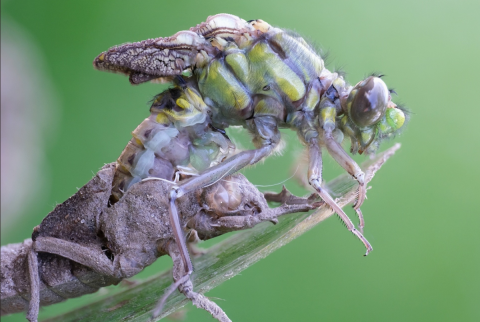
A study has found that the impact of climate change on an animal's traits can begin much earlier than scientists previously thought - a discovery that could reshape how researchers and policymakers approach biodiversity conservation.
Focusing on dragonflies, the researchers developed a new statistical framework to quantify the extent to which traits formed in early life influence adult trait diversity, and thus biodiversity more broadly. They found that factors like water temperature and seasonal changes during the aquatic juvenile stage shaped adult trait diversity more strongly than the land-based adult environments themselves. Biodiversity refers to the variety of living things in an area, including how many species there are and how different they are from each other in their physical appearance (referred to as traits) such as body size or shape.
This suggests that climate adaptation strategies should focus not only on adult populations, but also on what species experience earlier in life, the researchers say.
"This is really useful going forward as the results will provide a new general rule to guide how biodiversity scientists forecast climate responses - depending on juvenile or adult characteristics," said lead author Professor Lars L. Iversen, a biology researcher at McGill University. "The results can also help members of the public to understand how environmental shifts in life stages is important in driving climate responses."
While most biodiversity models focus on adult traits, which are easier to observe because adults are larger, more mobile and more visible, the researchers found that conditions during the juvenile phase can leave lasting biological imprints. In dragonflies, these early conditions often occur underwater and out of sight.

Image by Erland Refling Nielsen.
Toward better biodiversity models
The team, which included scientists from McGill University, the University of Aberdeen and the Leibniz Institute in Germany, analyzed data from 87 dragonfly species across Europe. They compared climate, landscape and habitat data with traits observed in both aquatic nymphs and airborne adults, revealing strong carryover effects from early life stages. The study was published in Global Ecology and Biogeography.
"This is a really important study, as many predictions for how climate might affect diversity are based on observations of adult stages, because these tend to be more active, visible and larger," said co-author Lesley Lancaster from the University of Aberdeen. "However, we find that the observed climate impacts are actually largely indirect consequences of processes affecting juveniles."
"Scientists and policymakers will be able to use this knowledge to determine whether they should target juveniles or adults for active climate adaptation and mitigation practices," Iversen said.

Image by Erland Refling Nielsen.
About the study
Complex Life Cycles Shape the Functional Biogeography of European Dragonflies by Lars L. Iversen, Jaime Garcia-Marquez, Afroditi Grigoropoulou, Michael O'Connor, Sami Domisch, Lesley T. Lancaster was published in Global Ecology and Biogeography.
This study was funded by the Natural Sciences and Engineering Research Council of Canada, the German Federal Ministry of Education and Research, and the Leibniz Association.






